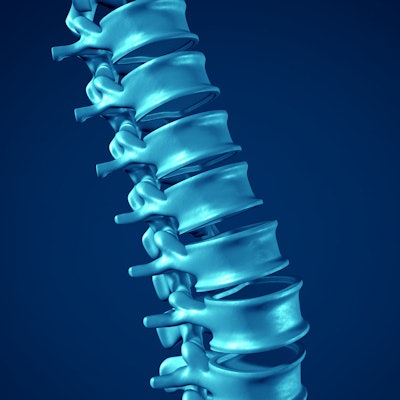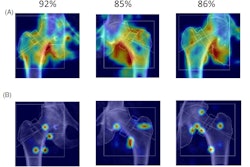
Boys showed lower bone density than girls on dual-energy x-ray absorptiometry (DEXA) scans in a group of Thai teenagers with diabetes in a study published July 10 in Bone. The finding suggests that gender may be a risk factor for osteoporosis in youth affected by the disease.
Researchers compared bone mineral density (BMD) scores over six years among boys and girls with type 1 diabetes and found that while boys had lower lumbar, femoral neck, and total hip scores, there were no similar statistically significant differences in BMD at any measurement site in girls.
"Our study in Thai children and adolescents with poor glycemic control and a median duration of [type 1 diabetes] of approximately 6 years revealed a deleterious effect on BMD, and that the effect is gender specific," wrote the group led by pediatric endocrinologist Dr. Jeerunda Santiprabhob of Mahidol University in Bangkok.
Type 1 diabetes is a risk factor for osteoporosis in adults, yet few studies have investigated the difference in BMD between diabetic children and healthy controls by gender. Among those studies that have, the results are conflicting, according to the researchers.
In this study, Santiprabhob and colleagues sought to identify factors that affect bone density in diabetic children by comparing BMD scores between diabetic youth and healthy individuals.
The researchers recruited 100 diabetic children (44 boys and 56 girls) between the ages of 5 and 20 years who had participated in a previous study at Bangkok's Siriraj Hospital between March 2016 to January 2018. They measured total body, lumbar (L2-4), femoral neck, and total hip BMD using DEXA (Lunar Prodigy, GE Healthcare) and compared the findings to results in equal numbers of healthy children.
Total body, lumbar, and femoral neck BMD z-scores were lower in diabetic children than in healthy controls. In addition, while boys had significantly lower lumbar and femoral neck BMD z-scores compared to boys in the control group, there were no statistically significant differences in BMD at any measurement site between diabetic girls and control girls, the researchers found.
| BMD measurements (z-scores) for diabetic youth vs. healthy controls | ||||
| Lumbar | Total body | Femoral neck | Total hip | |
| Total cohort (n = 200) | -0.384 | -0.229 | -0.035 | -0.024 |
| Boys (n = 88) | -0.707 | -0.455 | -0.075 | -0.059 |
| Girls (n = 112) | -0.094 | -0.024 | -0.001 | 0.006 |
"Our findings revealed BMD deficit in our [diabetic] cohort to be gender specific. Only boys had decreased BMD at almost all sites, while no bone deficit was found in [diabetic] girls," the researchers wrote.
The research confirms findings from previous studies showing that children with diabetes have decreased BMD compared to normal children, according to the authors. Yet, they noted that other studies have reported no differences in BMD between diabetic and nondiabetic children. Moreover, studies among Asian children are scarce.
Nonetheless, the researchers recommend considering male gender as a risk factor when assessing BMD in diabetic youth.
"Deleterious effect of [type 1 diabetes] on BMD is gender specific," Santiprabhob et al concluded.



















